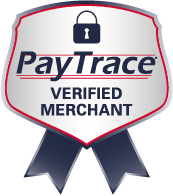Every business needs to market itself in some form, but there’s no one-size-fits-all approach to developing these strategies. A good marketing plan is always highly customized to address the needs and strengths of an organization, and this requires a heavy dose of critical thinking and long-term planning.
The amorphous nature of inbound marketing strategy development often intimidates business owners and other professionals, particularly where online efforts are concerned. Digital marketing is evolving at such a fast rate that it’s sometimes difficult to establish the best practices that will drive a successful marketing strategy. But no matter what your circumstances, there is a linear process that you can use to develop strategy and write up a marketing plan. Here’s a step-by-step checklist to help you cover your bases and give direction to your marketing efforts.
1. Identify Your Platforms
Inbound marketing in the Internet era now takes on many different forms. In addition to business websites and online search traffic, businesses have to consider users on a variety of Web-connected devices — not just traditional computers but also smartphones and tablets. And social media is now a major driver of marketing efforts, offering value to a wide range of enterprises. The first step in developing a marketing strategy is identifying your primary channels for consumer targeting. Once you know where you plan to seek out your audience, you can better identify the marketing tactics that will be most beneficial.
2. Characterize Your Audience
Some experts will recommend you develop personality profiles to represent your audience. If your business is seeking out stay-at-home moms, for example, you might give that audience profile a name, a face, a list of hobbies and interests, and so forth. This helps characterize the type of content and marketing styles that will best appeal to those consumers.
But personality profiles aren’t a necessity, especially if you already feel familiar with your target audience. In that case, you can think more generally: How do these people go online? What types of online behaviors do they display? Where and how can they best be engaged? The answers to these questions will direct your best marketing practices.
3. Mold Your Voice
Audience is key to defining your voice. Because you want to speak directly to those individuals, the voice and tone of your content needs to reflect the interests of your audience. Whether your voice is informational and fact-driven or sassy and outspoken, it needs to resonate with your target readership. More importantly, this voice needs to be married to your brand — allow it to permeate not just your written web content, but also videos, infographics, social media and all other content.
A range of online properties are now useful in promoting a business, but a website is still your online headquarters. Don’t start marketing your business without a fully-functional website that has been designed with your audience and voice in mind. And keep in mind the functionality you’ll need from this property, such as a mobile website to accommodate smartphone and tablet users, or widgets and plug-ins that promote your social profiles.
5. Map Out Your Content
Written content is essential to successful online marketing because it lets you target keywords while providing relevant information to consumers. It’s wise to have at least one new blog post published every week, and many businesses go beyond that to build a sizable body of relevant content.
However you choose to implement this content, you’ll want to have it mapped out at least a few weeks in advance. Come up with content topics and establish publication dates to keep you on track with your content marketing efforts.
6. Focus On Your End Goal
Campaigns don’t end when marketing materials reach prospective consumers. There’s always an end goal to keep in mind: a purchase, a conversion, a qualified lead to generate. Marketing content always needs to guide consumers back toward that end goal, whether through a call-to-action or other means. Your marketing is only valuable when it’s building toward these end goals, so keep the larger picture in focus at all times.
7. Promote, Promote, Promote
Inbound marketing is most valuable when it drives traffic to your website and creates followers for your business. Organic traffic is the most valuable form of website referrals, but you can facilitate this flow by promoting your content. Use a variety of channels, including email marketing, social media and other means of distribution, to present content to new eyes. Each time you accomplish this, your odds of reaching new customers increases.
Whether you’ve penned your own marketing strategy or need further guidance from a Denver inbound marketing firm, give yourself every opportunity to succeed. Contact DBC Digital today to find out how we can maximize your digital marketing opportunities.

